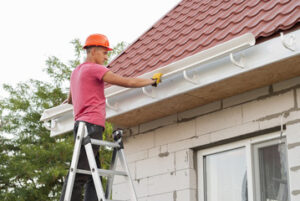Solar Panels Helena MT convert the sun’s light into energy. They are a sustainable and reliable power source, providing numerous benefits such as lowered electricity bills, reduced carbon emissions, and healthier air quality.

Monocrystalline solar panels are a popular choice for homeowners, offering high-efficiency rates and long warranties. Thin-film solar panels are also becoming increasingly popular for their lightweight and flexible options that can accommodate unconventional roof shapes.
Many homeowners hear about the benefits of solar power, but when they start looking into it in more detail, they often hit a roadblock: understanding the cost. There are all sorts of factors to consider, including what type of solar panels you choose, the size of your system and whether or not you opt for battery storage. The best place to start is with a free site assessment from a local installer.
Solar energy is a great way to reduce your electricity bills and help the environment. It cuts carbon emissions, which in turn decreases the rate of global warming and helps to reduce pollution. Cleaner air is also good for your health, decreasing the risk of heart disease and asthma attacks. It can even prevent premature deaths.
The price of solar panel systems has fallen drastically in the last decade, and you can expect to pay a fraction of what you would with a traditional power provider. A 6-kilowatt hour (kWh) residential solar system can cost as little as USD$20,000. You can further cut costs by securing a financing plan, which will eliminate upfront expenses and save you money over the life of your system.
When choosing solar panels, it’s essential to factor in your location and sunlight availability when calculating the number of panels you need. Your solar installer will take this into consideration and ensure that your system is sized correctly to meet your energy needs. The more sun you get, the more energy your panels will generate. The excess can be used to power your home battery system or sold back to the grid, where it earns you credits.
Besides the amount of sunlight you receive, your installation location will also have a big impact on the overall cost of your system. Different regions of the country have different peak sunlight hours, and it’s essential to take this into account when calculating how many panels you need.
There are three main types of solar panels: monocrystalline, polycrystalline and thin film. Monocrystalline and polycrystalline are the most popular options, but each have different characteristics. Monocrystalline panels are made from whole silicon crystals and are more efficient than polycrystalline ones, which use fragments of silicon. The latter are less expensive but aren’t as effective as monocrystalline panels, which is why many people choose a hybrid solution that uses both polycrystalline and monocrystalline solar panels. Thin film solar panels are a newer technology that apply ultra-thin layers of semiconductor materials like cadmium telluride or amorphous silicon to surfaces. They’re more flexible than crystalline panels and can be shaped to fit into your roofline, making them easier to install.
Energy Savings
A solar panel converts sunlight into electricity by sending electrons from a high-energy state to a low-energy state (through a diode). This process can be reversed, causing a battery to store energy. Larger solar panels are arranged into vast solar farms to generate enough electricity for large cities.
The amount of energy your solar panel produces depends on the number of sunlight hours it receives each day. Solar panels are typically less efficient in winter, due to shorter days and limited direct sunlight. However, even a small solar panel installation can offset your home electricity usage and lower your electric bill significantly.
How long it takes for your solar system to pay for itself, known as the solar payback period, is dependent on many factors, including your initial investment, local electricity rates, and energy consumption. However, solar systems are typically able to pay for themselves within a few years.
Most homeowners choose to install solar panels on their roofs to reduce the amount of money they pay to the utility company each month. In addition, some states offer financial incentives to encourage more people to switch to solar. These can include rebates, tax credits, and other financial incentives.
Solar panels convert sunlight into electricity using photovoltaic cells, which are composed of semiconductor materials such as silicon. These cells are grouped together to form solar modules, which are mounted on a metal frame and covered by an insulative layer and protective glass. They also contain wiring elements and a DC-to-AC inverter to convert DC current into usable AC power.
There are two types of solar cells: monocrystalline and polycrystalline. Monocrystalline cells are made of one solid piece of pure silicon and have a sleek appearance. They are generally more expensive than polycrystalline solar panels, but they can produce more power and last longer.
Solar panels are designed to operate for up to 30 years with minimal degradation, but they can continue to produce energy for much longer than that. In fact, a solar system that has achieved a 100% offset will produce enough electricity to match the household’s consumption and completely offset utility bills.
Environment
Solar panels are a renewable energy source that helps the environment in multiple ways. First and foremost, they produce clean energy that does not emit any harmful greenhouse gases into the air. These gases cause climate change, which is a threat to the world’s biodiversity and has already started impacting the global temperature of Earth.
Solar technology uses the natural light that reflects off of the atmosphere to power homes and businesses. This is a far more environmentally friendly option than burning fossil fuels, which releases greenhouse gases into the atmosphere. Additionally, solar technology does not require drilling or excavation, which causes damage to the planet’s surface and underground water resources.
The solar cells that make up a solar panel are made from silicon, a semiconductor material that absorbs sunlight to generate electricity. The atoms in the silicon absorb photons of sunlight, which gives them extra energy that pulls electrons from their atomic orbits and creates an electric field that funnels those free electrons to conductive metals. This process is known as the photovoltaic effect.
Because solar cells absorb sunlight, they do not release any pollution into the air. This is a big deal, as carbon emissions are one of the biggest contributors to climate change and can lead to serious health issues. This includes heart disease, asthma attacks, and lost workdays due to respiratory problems. Solar energy does not emit any pollutants, which means that it can save lives and improve health conditions by lowering the amount of air pollution in the environment.
In addition, solar panels are a lot easier to recycle than traditional fossil fuels, which can be hard to break down and recycle without damaging the environment. The solar industry is working to develop better recycling efficiencies and dedicated recycling facilities for the waste produced by solar panels.
While there are some carbon emissions associated with the manufacture of solar panels, they are a much cleaner alternative to fossil fuels. New solar cell technologies like perovskite and organic solar cells are reducing the need for harmful materials and boosting efficiency, further lowering their environmental impact.
Installation
Solar panels are not easy to install, so it’s important to work with a reputable engineer to ensure that your system is safe and meets all local regulations. Before starting the installation process, the engineer will assess your property and check that its structural system can support the panels. This will also help them determine the best placement and angle of your solar panel system, which can maximize its efficiency. In addition, they will also consider the size of your household and annual energy consumption when determining how many solar panels to install.
The next step is to prepare the solar panels for installation, which includes installing wiring and mounting equipment. You will want to choose the right mounting materials for your system, such as stainless steel, wood, or concrete. Stainless steel is a more expensive option, but it will last longer and is more resistant to corrosion than concrete. If you are unsure which type of material to use, consult with your engineer. They will be able to guide you through the pros and cons of each option.
Once the mounting systems are in place, the solar panels can be installed on top of them. Most homeowners choose to roof mount their solar panels, as it is convenient and doesn’t require any garden space. However, there are other mounting options, such as ground and pole mounted panels. In addition to deciding where you want your solar panels, it is also important to study the environment surrounding them and make sure that they will not be affected by shading, as this could impact their performance levels.
Once the solar panels are installed, they will need to be wired together and connected to a solar inverter, which converts the electricity into usable power for your home. It is important to clean the solar panels regularly with a hose or sponge, especially during cooler parts of the day. In addition, it is recommended to have your solar panels inspected by a professional every 4-6 years to prevent any issues and maintain their warranty.








